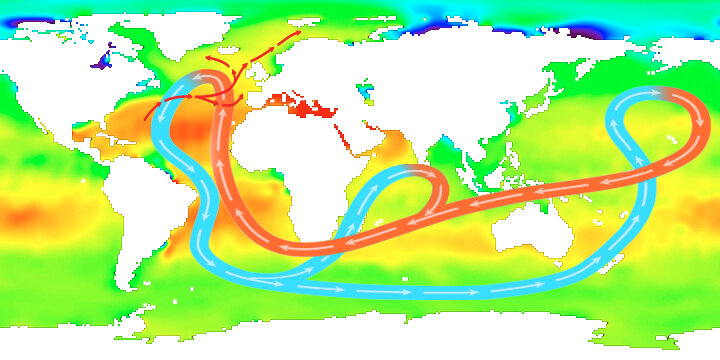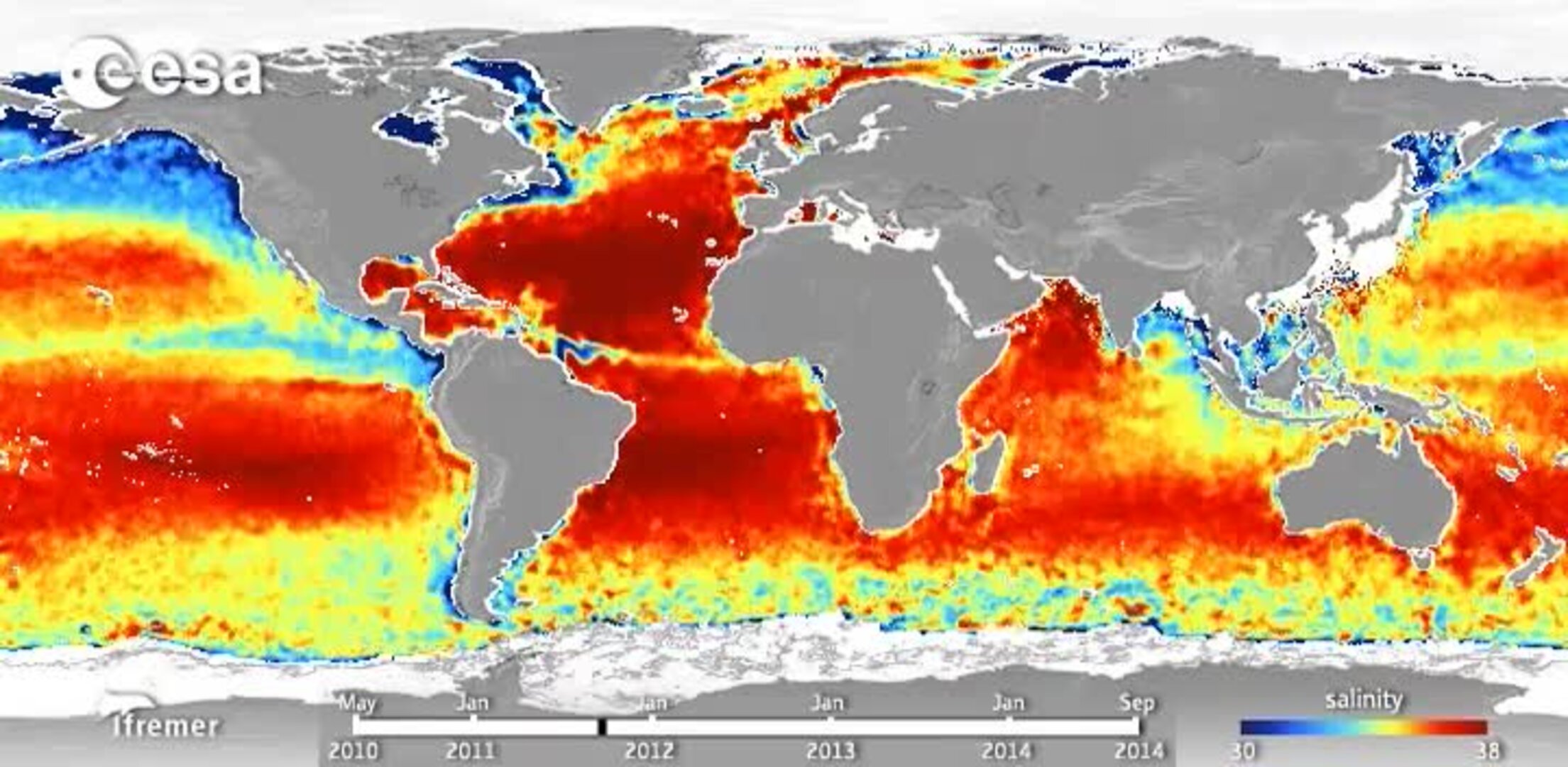Sensing salinity
Everyone knows that seawater is salty, but it is not immediately obvious that the salinity of the surface waters varies around the world and with the seasons.
Salinity is expressed by the amount of salt found in 1000 g (about 1 litre) of water. The average concentration of dissolved salt in seawater is about 35 (35 g of salt per 1000 g of water) – but concentrations typically range from 32 to 38.
Salinity is controlled largely by the balance between evaporation and precipitation. It is therefore at a maximum in sub-tropical latitudes where evaporation exceeds precipitation. Surface waters are generally less saline around the equator and higher latitudes because rainfall exceeds evaporation. In addition, freshwater plumes from large rivers such as the Amazon alter surface salinity.

As well as wind driving ocean surface currents, temperature and salinity are key variables affecting ocean circulation.
For example, as sea ice grows in polar regions during the winter, the freezing process extracts freshwater from the oceans and forms ice, leaving behind dense, cold salty surface water.
If the surface layer becomes sufficiently dense it sinks to the ocean depths. This pumping of surface water into the deep ocean forces the deep water to move horizontally until it eventually rises back to the surface. This very large, slow current is called the ‘thermohaline’ circulation.
The uppermost three metres of ocean stores more heat than the entire atmosphere. So this conveyor-belt-like circulation is as important component of Earth’s heat engine and crucial in regulating the weather and climate.

Since salinity is one of the main drivers of ocean circulation and closely connected with the cycling of freshwater around the planet measurements of sea-surface salinity from SMOS are improving our knowledge of the conditions that influence these circulation patterns and thus climate.
SMOS has now provided the longest continuous record of sea-surface salinity measurements from space. These data are allowing scientists to determine and monitor for the first time from space and ensemble of key ocean processes for climate and biochemistry.
This includes, for example, salinity differences related to El Niño and La Niña, and the impact that freshwater from large tropical rivers has on tropical cyclones.












